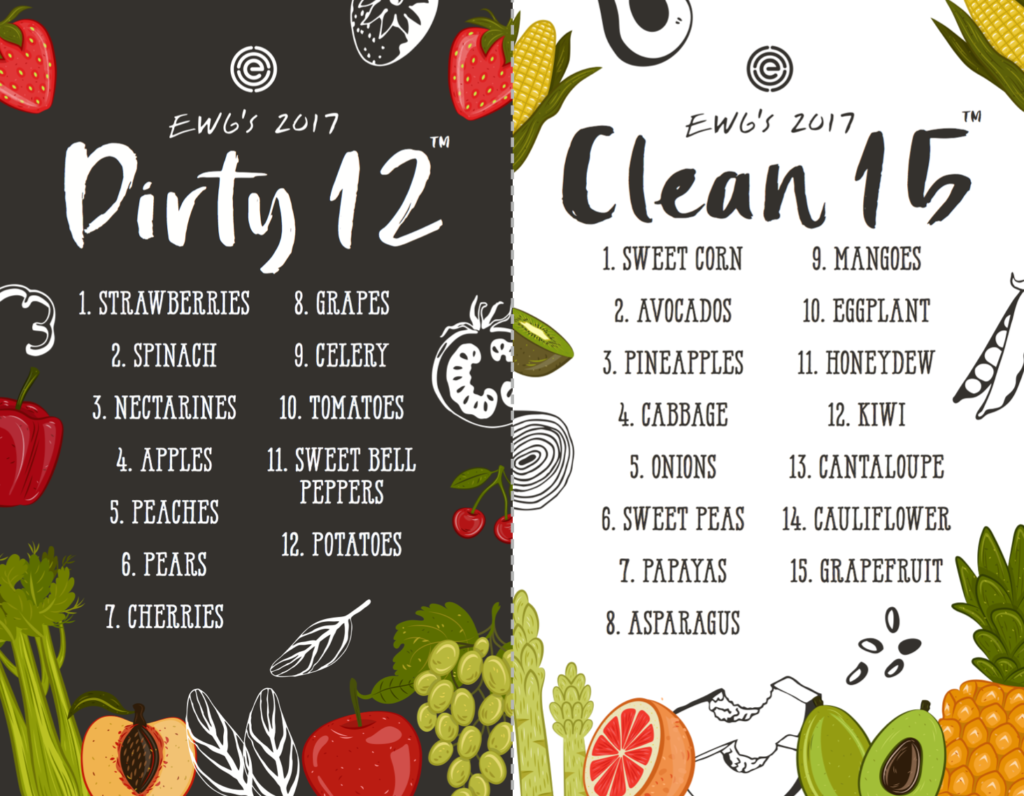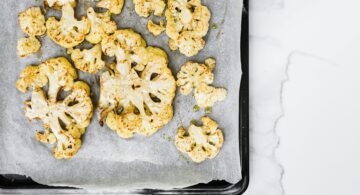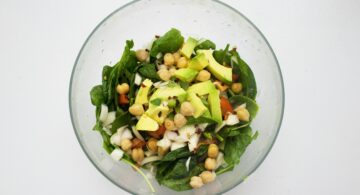Recipes to Reboot Your Liver
Many of you readers are singing the same sad song. You are at your wits’ end. It’s as if your body has turned against you! You’re tired, bloated, unable to lose weight, and experience acne or skin issues that are just as bad as a teenager! You’ve tried everything you can think of: exercising, cutting calories, changing your skincare routine – but nothing works. Nothing yet, at least!
I’m here to offer you a remedy. It may be one you haven’t even thought to consider before. You may have blamed your thyroid for a slow metabolism. You may think mid-life hormonal surges are responsible for your breakouts. But, you’re missing the root cause. Most people are oblivious to what is really responsible for their body’s strange behavior. It is your body’s largest organ, the liver, that is often behind these frustrating symptoms.
When asked what the liver does, most people respond, “It filters your blood.” Yes, this answer is correct. But what your liver does day in and day out, 24/7 is far more complicated than that. Aside from your heart, the liver works harder than any other organ in your body. The liver:- Contributes to digestion (primarily fats)
- Aids in controlling blood sugar
- Regulates hormones
- Stores energy
- Produces proteins
- Breaks down and filters chemicals and toxins
Every single thing you breathe in, absorb through your skin, and ingest has to go through the checkpoint known as your liver. Your liver is like a customs officer that has to check everything that passes through it. The liver must I.D. everything as either a healthy substance, like vitamins, or unhealthy toxins, like pesticides. It ultimately decides what to allow your body to use and what to throw out in the waste.
This isn’t an easy task, especially when the average diet and lifestyle is full of toxins and chemicals. What you put on your skin, what you eat and drink and the medications you’re on all take their toll on the liver. Many times your liver becomes bombarded with toxins and cannot keep up. It is unable to properly do its job because it has become damaged and overloaded by too many toxins and chemicals. When this happens, your liver doesn’t properly regulate your hormones or process fats. You begin to gain weight and show signs of hormonal imbalances.
The good news is that this isn’t the end! In the case of most of our body’s organs, once they’re compromised, they may never fully repair or work as well as before. However, the liver has the amazing capacity to regenerate, reboot, and repair! Yet, this can only happen by giving your liver a break from the toxic overload.
Giving Your Liver a Break
What’s the best thing to do when you’re overwhelmed? Take a break, of course! So, how do you give your liver a break? You can’t just shut your liver off for a while. If you did, you would die! But you can take steps to cut down on the excess work it has to do each day.
For one, you can eat foods that nourish and support the liver and it’s functions. Second, you can take supplements that support detoxification and regeneration.
The results of a healthy functioning liver are weight loss, hormonal balance, and increased energy! Who wouldn’t love all that?!
Everyone could benefit from a liver reboot. Even the healthiest people cannot avoid being exposed to toxins. Toxins are everywhere around us. Many liver compromising toxins hide out in:
- Plastic containers and metal cans
- Skincare products
- Drinking water
- Cleaning products
- Smoke (first and second-hand)
- Non-organic vegetables and fruits
Though it is impossible to avoid toxin exposure, there is no need to live in fear. Our liver is specifically designed to detoxify our bodies. It filters these toxins out of our bloodstream and into our waste. It is only after years of exposure that the liver begins to lose some of its detoxification capacity.
Although we can’t protect our liver from ever being exposed to toxins, we can give it a chance to restore to optimal function. And in doing so, your whole body will experience improved health!
The first step in giving your liver a break is to do your best to avoid excess toxic exposure. Like I mentioned earlier, avoiding all toxins is impossible. However, you can greatly reduce your exposure by following these steps:
- Drink only filtered water instead of tap water.
- Use only all natural products on your skin (makeup, lotions, soap, etc.)
- Avoid canned foods.
- Use only BPA-free plastic.
- Avoid all artificial flavors, colors, sweeteners and preservatives.
- Find natural alternatives to pharmaceutical and over-the-counter drugs.
- Avoid foods listed on the Dirty Dozen (or buying organic versions).
Released by the Environmental Working Group, the Dirty Dozen is a list of the top 12 foods with the highest pesticide residues. The Clean 15 is the list of the top 15 foods with the lowest pesticide residues. Buying organic versions of foods on the Dirty Dozen list is a great way to enjoy these foods without the pesticide residues. Below are the Dirty Dozen and Clean Fifteen lists for 2017:
It is also important to note that alcohol consumption is one of the greatest contributors to any sort of liver problem. Drinking in moderation is typically fine. But, if you are committed to giving your liver a break, you should abstain from all alcohol for at least a month or two.
Liver-loving Foods
Lowering your toxic exposure is key to giving your liver the break it needs to repair and restore optimal function. To maximize liver detoxification, incorporate liver-supporting foods into your diet. These liver-loving foods are nothing out of the ordinary. They are everyday foods that contain specialized compounds that speed up the liver’s natural ability to repair. Incorporating these liver-loving foods, while eliminating liver-compromising foods from your diet, can give your body the breakthrough it needs to come into balance.
Try to incorporate at least one food from each category into your daily diet for maximum liver support.
1. Cruciferous Vegetables: Cauliflower, Broccoli, Brussel Sprouts, Cabbage, Bok Choy, and Kale.
These vegetables contain sulfur and promote neutralization of toxins in the liver. They also help the liver produce enzymes, which aid in detoxification.
2. Leafy Greens: Swiss Chard, Turnip Greens, Escarole, Cilantro, Parsley, Mustard Greens, and Dandelion leaves.
The more bitter the green, the better it’s ability to stimulate bile production in the liver. Bile is what carries toxins out of the liver. Some of these greens can also neutralize heavy metal toxins. Cilantro, in particular, binds to mercury and other metals and helps remove them from your system.
3. High Sulfur Foods: Eggs, onion, garlic, and again cruciferous vegetables.Sulfur aids in detoxification. Garlic, in particular, has high levels of allicin. Allicin is a sulfur compound, which protects the liver and can help detoxify toxic metals and excess estrogen hormone.
4. Antioxidant Rich Foods: Berries (organic), Grapefruit, Apples (organic), carrots, melon, and green tea.
Antioxidants are compounds, which protect the liver from damage while detoxifying the blood. Grapefruit, in particular, contains a substance called naringenin. Naringenin stimulates the liver to burn fat rather than store it. Green tea also contains particular antioxidants called catechins. Catechins prevent fat from accumulating in the liver.
5. Beets and Artichoke
Beets and artichokes are in a category of their own because of their enhanced ability to support the liver. Beets naturally help to purify the blood. They also assist the liver in metabolizing fat rather than storing it. Artichokes stimulate the flow of bile, which in turn speeds up the elimination of toxins out of the liver. Some health professionals estimate that eating an artichoke can increase bile flow by 100%!
These liver-loving foods aren’t out of the ordinary. However, many people are unsure how to prepare these foods in new and tasty ways. Eggs for breakfast every single day can get boring. But adding flavorful vegetables and spices can turn your boring eggs into a delicious quiche. (Quiche also makes a delicious lunch.) You can add all kinds of liver-loving vegetables to your quiche. I like to add artichokes, mustard greens, and garlic to my quiche. This quiche is high in sulfur compounds to support your liver by encouraging detoxification.
Liver-Loving Quiche
Ingredients:
- 2 tablespoons olive oil
- 1 small yellow onion diced
- 4 cloves garlic, minced
- 3 cups mustard greens rinsed and chopped
- One 14-oz can of artichoke hearts drained and chopped
- 1 1/2 teaspoons sea salt
- 3/4 teaspoon freshly-ground black pepper
- 2 ounces pecorino romano or other hard Italian cheese, shredded
- 10 large eggs
- 3/4 cup coconut milk plus 1/2 cup water
- 1 teaspoon dried thyme
- 1 teaspoon dried oregano
Directions:
1. Preheat the oven to 375 F. Generously grease a deep-dish pie plate with butter or non-hydrogenated palm oil shortening.
2. Heat the olive oil in a skillet over medium heat. Cook the onion until soft and then add the garlic and cook for another minute more. Add the mustard greens and artichoke hearts and cook, stirring frequently until the greens are wilted. Season with the salt and pepper and remove from the heat.
3. In a large bowl, whisk together the eggs with the water, coconut milk, thyme and oregano until well blended. Spread the collard/onion mixture over the bottom of the greased pie plate; sprinkle the cheese evenly over the greens. Carefully pour the egg mixture over the cheese and greens. Bake for 25 to 35 minutes, or until the top is golden brown and a knife inserted in the center comes out clean.
4. Serve with a chunky salsa or warm marinara sauce.
Beets are an uncommon vegetable in the American diet. But the Russians and other eastern Europeans revere beets. Beets are the primary ingredient in a common soup called Borscht. I prefer beets in salad form. This salad incorporates liver-loving beets, arugula, and apples. It is the perfect summer dish and a great way to incorporate beets into your diet.
Liver-Loving Beet Salad
Ingredients:
- 3 large beets (or 6 small beets)
- 3 medium granny smith apples, peeled cored and chopped small
- 3/4 cup chopped raw pecans
- 3 1/2 packed cups of baby arugula, lightly chopped
- 1/2 medium orange, juiced and zested
- 2 Tbsp olive oil plus more for baking beets
- 1 Tbsp apple cider vinegar
- 1-2 Tbsp raw honey, melted
- Soft goat cheese crumbles
- Sea salt, to taste
- Black pepper, to taste
Directions:
1. Preheat oven to 400F. Wash and dry beets. Trim off the leaves and root tip (leaving the skin on). Drizzle a little olive oil over each beet and sprinkle each with a dash of sea salt. Wrap each beet individually in aluminum foil and place on a baking sheet. If using smaller beets, bake for about 50 minutes. If using larger beets, bake for about 90 minutes or until a fork can pierce the beet easily.
2. Remove the beets from the oven and allow them to rest for about 10 minutes. Unwrap each beet and drain the excess beet juice into a small bowl and set aside. Chop the beets into small bite sized pieces and place in a large mixing bowl.
3. Place your chopped pecans in a medium-sized skillet over medium-high heat and cook until lightly toasted, stirring frequently. Set the pecans aside.
4. To make the dressing, take the reserved beet juice and add the 2 Tbsp of olive oil, apple cider vinegar, raw honey, orange juice and orange zest. Stir and add sea salt and black pepper to taste. Add additional orange juice or vinegar to taste. Pour the dressing over the beet mixture and toss to coat. Add the arugula, toasted pecans and apples and toss again.
5. Top with goat cheese crumbles.
Everyone needs a break from stress to recharge, even your liver. Take the time to give your liver some love by eating liver-supporting foods. Avoid excess toxins and chemicals to support your body coming into balance once again. You’ll benefit with weight loss, clear skin, balanced hormones and increased energy. Start this liver-loving regime today and reboot your health!
If you liked this article, then you’ll love these:
- Eating for Healthy Genes
- The Eye is the Window to the… Body?
- What Do Your Teeth Say About Your Health?
Recipes adapted from: www.paleocupboard.com




























